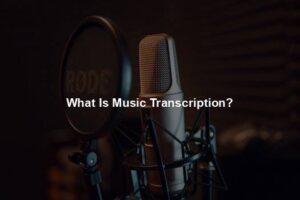
I have been writing different write-ups on dubbing, voice recording and voice acting. I thought, why not write a series of articles that will talk about different studios and the equipment we find in these studios we use for our voice recordings and film dubbing processes? People think for one to create professional audio recordings they need a full-blown pro studio but that’s not the case. In this series, you will get to know what kinds of equipment you will need for a studio depending on your financial and space capabilities. This article will come in handy for anyone who is planning to voice recordings. I will outline different studios and you can choose the one that will suit you well.
We have four types of recording studios. These studios are:
This will be a three-part series talking about the different studios I have mentioned above, I will talk about the semi-pro and pro-recording studios in one article because they somehow have the same equipment. In this article, we will look at the bedroom studio.
A bedroom studio is a small studio that people set up in their small rooms and don’t really need a lot of equipment. It is typically a tiny setup that allows one to record sound into their computer. This is a studio for someone who is a beginner and would like to learn the ropes of perfectly recording and editing sound. As much as you would want to learn everything at once and be a pro, every good thing takes time, and every step is a learning lesson. Building a bedroom studio will really help you in your journey to being a pro sound engineer.
When building a bedroom studio there are some pieces of equipment that you should get, to get you started on your journey and that is exactly what we will look at today. You will need:
- Computer
- DAW
- Audio Interface.
- Microphones
- Headphones
- Studio Monitors.
- Cables
- Microphone Stands.
- Pop Filter
1. Computer
We are living in a time when everything is digital, and since that is the case, having a computer is very vital. It might be for recording, but in a digital world having a computer is paramount. For a bedroom studio, you should be able to invest in the best computer you can afford. You need not start with a super expensive one, but just having one that has all the important specs is very important. A computer with a good DAW would be the best bet because you will end up maximizing on its features before you can upgrade and get a higher level computer with time.
2. Digital Audio Workstation (DAW)
In case you were wondering what a DAW is, it is a digital audio workstation. It is a software whose primary function is to assist in recording, editing, and mixing music and audio files on your computer. Digital Audio Work stations were originally designed to mimic the look-and-feel of analog mixing boards from the pre-digital era. It is good to note that a good digital audio work station will really help you get the most out of your audio recordings with its vast level of functionality. Depending on what exactly you plan to use your bedroom studio for, there are different DAW’s you can choose from that would work well on any computer.
3. Audio Interface.
Once you have chosen the best software for your computer, you should be able to get the best audio interface that will work well with your chosen software. The primary purpose of the olden days’ audio interfaces was to provide the connection for you to send your music or recording INTO the computer when recording it and OUT of the computer during playback. Modern-day audio interfaces are used for digital conversion, mic preamps, DI boxes, headphone amp, and monitor management. The best audio interfaces for a bedroom sound studio would be the “all-in-one” audio interfaces. They are the best when trying to save some money.

4. Microphones.
I think everybody knows what a microphone is. They have existed for a long time. Even our great grandparents interacted with a microphone. A microphone is a device that is used to amplify the volume of sound. They work the same way they used to back then. They are important in studios and for your bedroom studio; you need a microphone. They help to achieve a different sound from different instruments in different situations.

5. Headphones.
For your home studio, you can either invest in good earphones or headphones. The reason many people prefer headphones to earphones is that of how good the quality of the audio is when listening to it through headphones. For an audio studio, there are usually two important types of headphones that everyone needs. These two headphones help to complete two main tasks, and these are closed-back headphones and open-back headphones. For your bedroom studio, invest in headphones that are not too expensive but can at least help you in the best way.

6. Studio Monitors
Studio monitors are very important for any audio studio. In a pro studio world, they are known as near field monitors. You might confuse them for normal looking speakers, but they are more than just normal speakers. Normal speakers usually help in accentuating specific frequency bands to improve the listening experiences for specific audiences. Studio monitors are designed to provide perfectly FLAT frequency response, so engineers can hear a mix as it truly is, flaws and all… so they can adjust accordingly. These monitors are usually very expensive, but you can get cheaper ones for your bedroom studios.

7. Cables
I will tell you this for sure. You will not miss lots and lots of cables in different studios, so it is not any different for bedroom studios. You need to invest in cables that will help you connect your different equipment to help make your work easier. As you expand your studio, you will end up owning more cables than you can really count, but for a bedroom studio you only need three cables and these are:
- RS/TS (audio) 1/4” TRS stereo .
- XLR (audio, digital audio) Male and female
- RCA (audio) RCA left and right channel audio
- MIDI (data) DIN-style connectors, used for MIDI protocol.
- ADAT Lightpipe (digital audio)
- Word Clock.
- USB (audio, data, connectivity)
- FireWire (audio, data, connectivity)
8. Microphone Stands.
It is important to have microphone stands. It would not make any sense to own microphones and not own some microphone stands. This will help you put your mics in place and avoid them falling, and getting spoiled. Depending on how many microphones you have for your bedroom studio, you can invest in the same number of stands or fewer. There are different shapes and sizes, all designed for different purposes and tasks. Be sure to get a great quality so you can use them for a longer time even as you expand your studio. Be sure to note that investing in good microphones and microphone stands will be beneficial for you in the long run.

9. Pop Filter
I have many people say they need to get pop filters for their bedroom studios. Pop filters usually help to filter out some unwanted or unnecessary sounds that our lips make when we pronounce certain words. If you are just a beginner, you wouldn’t know this but a professional sound engineer would know this and that is why pro filters would come in handy for pro studios more than bedroom studio. If you are a perfectionist though and you have a bedroom studio, it is very okay to get a pro filter for your studio.

If you a young aspiring sound engineer who doesn’t really have the financial capacity to open a huge pro audio studio, you can open a simple bedroom audio studio in the comfort of your house and invest in the equipment I have mentioned above. You don’t have to buy everything at a go. Just take it a step at a time and in no time you will have your bedroom studio and can start practicing as you wait to open a bigger studio. It might be a dedicated home studio or a pro studio, but the sooner you start the better.







